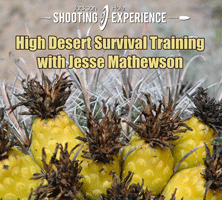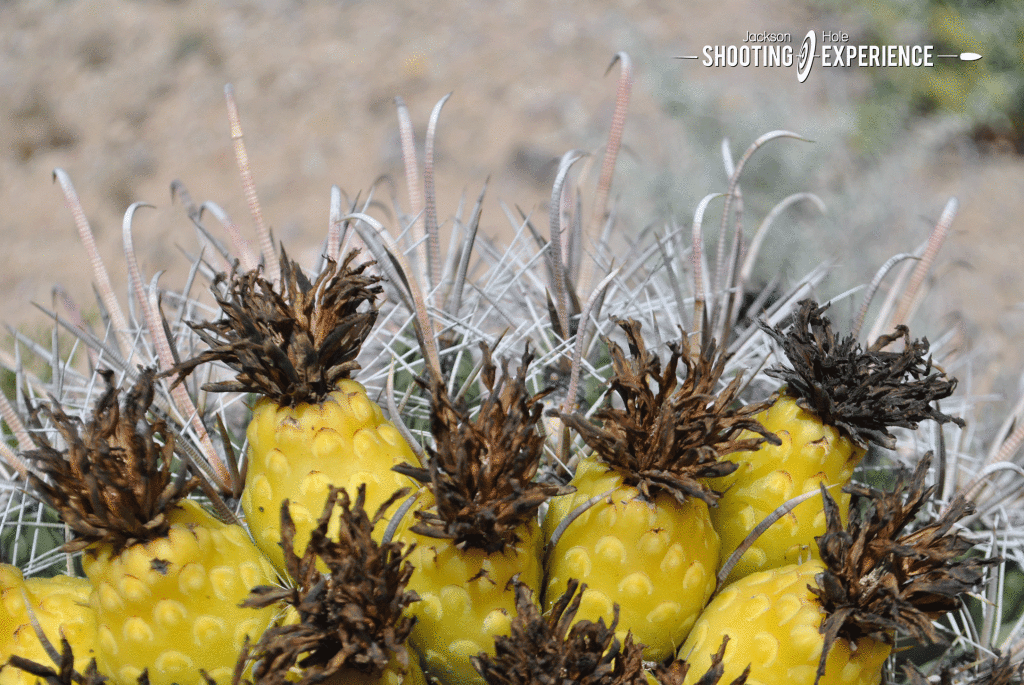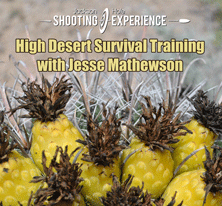 Desert Survival Training in Arizona
Desert Survival Training in Arizona
At the range a couple months ago, I was approached by a martial arts legend that had made hand to hand combat his profession for 30+ years, including many years as a professional MMA fighter. He often visits the range and begins his session with a 22 rifle for an hour before moving into larger calibers. I often watch him and appreciate his style. He approached me and requested a training session. I asked in surprise, “But you already really know what you are doing, why would you want training?” His response was telling:
“Because I am a trainer & know the value of good instruction.”
This humility and insight rekindled my desire to continue my own training in matters of survival, security and shooting. Like most in my industry, we puff up our chests and act as though we know everything about survival, shooting and pretty much everything else. For ever 100 “Prepper Gurus” that nod knowingly about knowing skills like setting a snare, starting a fire etc, only a couple can demonstrate upon demand without warning.
I reached out to my old friend Jesse Mathewson in Arizona, who trains in high desert survival issues and booked a 4-hour training session for me and my wife / business partner Lynn Sherwood. OK, we wimped out “for scheduling reasons” and chose late January rather than late July, I admit it. Jesse said to bring comfortable shoes and plenty of water and to meet him an hour outside of Tucson in the desert. I offered to bring my .308 for a little 1,000 yard fun after our training session.
We were not sure what to expect. We knew Jesse to be a “generalist” that was familiar with various weapon systems with a passion for martial arts, knives and guns, was a student of philosophy and was regarded as a “radical” community organizer in his hometown of Tucson Arizona. Like me, he is definitely “unconventional” philosophically. This is exactly what I wanted! I knew that much of his training specialty was in helping other disabled people defend themselves, and hailing from one of the poorest cities in the country, the challenge of his unique pricing structure was exacerbated by our friendship. His fees are described as follows: “Free, and if you feel like you got some value out of our training, pay me what you think is fair.” I know that “free” is usually worth exactly what you pay for it, however I hoped Jesse would make the experience stellar!
On the afternoon before our training day, we were excited to receive a text message, “…you’ll love the twist 🙂 no worries but it will be fun.” Now we were even more excited! Jesse warned to allow plenty of time for construction.
We arrived at a secret location in the Arizona desert at 10:30am and learned by text message from Jesse that due to a car accident the previous week, lousy insurance service from Allstate that confused/ruined the rental car and new-car swap and repairs to the new car, combined with construction on the way to our location, that he would be late. Improvising and overcoming, Jesse got us started with the following tasks after warning of non-government-approved-human-existers & javolinas:
- Gathering walking sticks
- Selecting a large mesquite tree as a foundation for our lean-to about 50 to 100 yards from a pond
- Gathering 7-foot sticks to build a lean-to
- Finding hard black rocks with which to start a fire
- gathering 4 pads of a cactus plant
- Gathering long tines from a tall cacti thingy
- Build a lean-to to protect from wind and sun
- Find firewood as described
- Start a fire with a hard black rock and the back of a knife
Lynn and I spent the next 2 and a half hours experimenting with lean-to construction, communication and gathering the suggested resources. We had an absolutely fabulous time! I tried starting a fire in the perfectly dry 70*F conditions using a rock and the back of my Cold Steel knife blade. Yeah, no. I had seen this done by Kevin and the crew at Teton Science School in drizzling conditions, so I knew it was possible, but evidently not with me driving. I looked forward to learning, and in the meantime practiced starting a fire with my newly purchased Survivor Fire Starter. That was easy.
At about 1:45pm Jesse arrived and showed us his desert “go bag.” He reminded us of his mantra. “Water first, then shelter, then food.” He did not have any food in his bag. Why not? I knew this answer from training by James Phillips, son of Jim Phillips. James mocked the idea of worrying about food for the first week of SHTF survival, saying that folks can last up to 30 days. Water and temperature were much more important.
Jesse highlighted the importance of having water packets made of a material that could be placed on a fire or a metal container in which to boil water. He gave us some water packets along with a Morakniv knife and a Shemagh. We attempted to get a fire going with three knives and several rocks, but were not able. He started a small fire with a ferro rod. Using the cactus pads Lynn had collected, Jesse singed pricklys off of the pad, then cut it open and explained that it contained some moisture and some nutrition. I asked for a critique on our lean to, and Jesse made the wise observation that it was in the bottom of a water en-catchment, and that at other times of the year, it could have filled with water and become a pond. He suggested having the lean-to on higher ground.
We then walked to a small pond used heavily by cattle. Jesse explained that in a survival mode, the Shemagh could have been used to strain water that would then be boiled. He explained that snares could be set up to catch ground rodents, and that a bird trap could be made. He told us that javolinas could be speared or shot as could deer, and that the pond was a draw to all critters in the desert, not just us. The best lesson of the day was a cool trick of defocussing my eyes, which would then allow me to pick up movement of birds better. This old bird-watchers trick is worth researching further!
While I have already forgotten which is which, Jesse pointed out a few plants and explained that some desert plants were edible and some were poisonous. He showed us a packrat nest and a rabbit run as well as a javolina run. We returned to base camp and returned the area to its original condition, except for the lean-to, which we left up. I hoped it might someday be used for shade by someone else.


